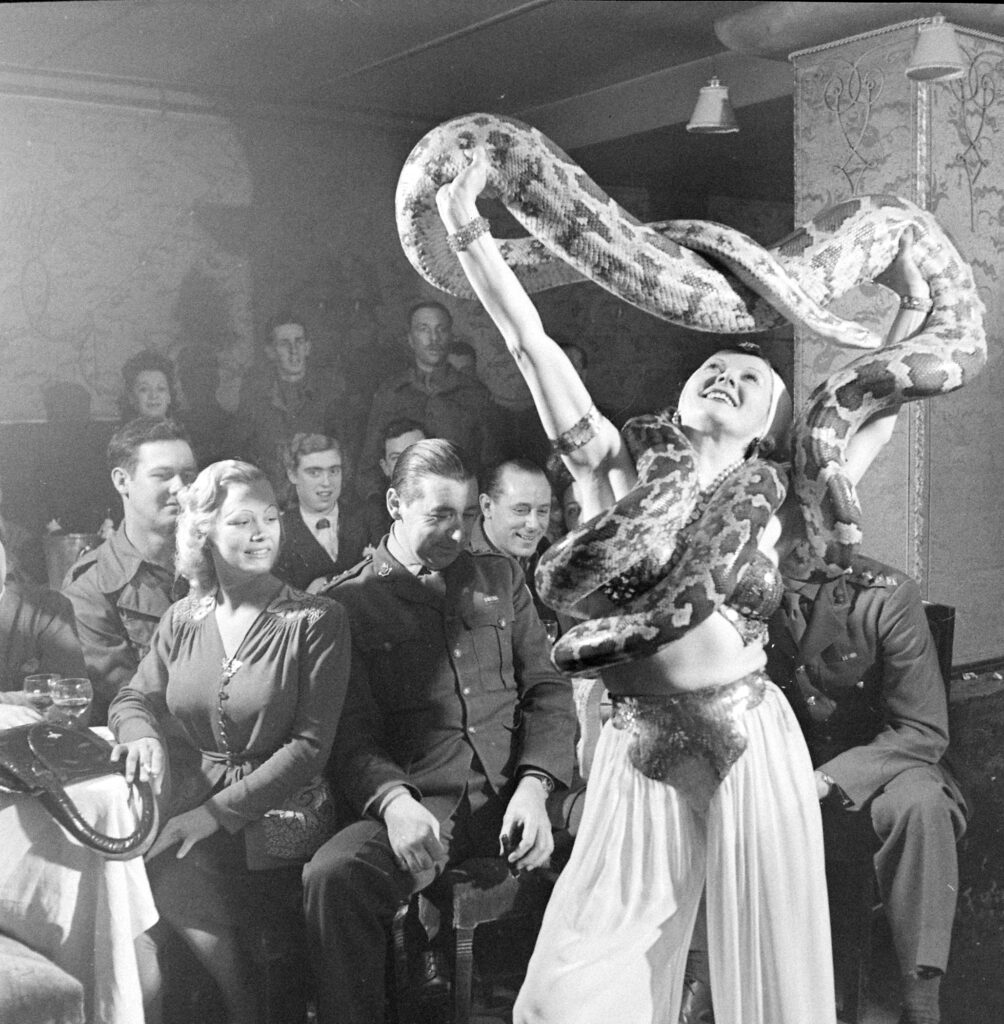“So whaddya want to do tonight?”
“There’s some people walking around a dance hall all day and night. They’ve been at it for months. We could go cheer them on.”
“Or see if they finally collapse?”
“Exactly. And we can stay as long as we want.”
“Let’s go!”
The Great Depression was so brutal in part because it lasted so long, from 1929 to 1939. One peculiar window of what it was like to live in that miserable age was an entertainment phenomenon known as the walkathon.
Today the word “walkathon” might bring to mind a fund-raising event such as Penn State’s Thon, in which students stay on their feet for 24 hours to help kids with pediatric cancer. The walkathons of the Depression era were entirely different. They were spectacles of endurance and pain tolerance, held in a confined space, and they could last for weeks or months.
The competitors were usually couples. In some cases the events were called “dance-athons,” but whatever the name there was usually little dancing, which at that time was frowned upon in public settings. LIFE’s story on walkathons in its May 30, 1938 issue said: “People go to a walkathon not to see performers dance, which they don’t, but to see them suffer under the agonies of overwhelming exhaustion.”
Watching people walk for days on end sounds like it could get boring, but audiences loved it, according to a recent history on ultrarunninghistory.com: “Thousands, and even tens of thousands of curious onlookers would pay 25-50 cents to watch the carnage as long as they pleased. The walkathons were so popular that they were even regularly broadcast multiple times per day by radio stations.”
Walkathons pre-dated the Depression, but they peaked in popularity as the nation’s fortunes dwindled.
How did they work exactly? The top competitors were rewarded with prize money, and they were allowed rest period each hour. But according to ultrarunninghistory.com, promoters would change the rules at any moment, either to juice up the action or bring the competition to an end:
In order to have an event last for weeks, generally after the first three hours, rests were given each hour. For example at a 1932 walkathon in Oregon, contestants would walk for 45 minutes, and then rest/sleep 11 minutes off stage. They would come back out at the sound of a gong or airhorn and then sit in front of the audience for four minutes getting ready for the next hour. Sometimes during the evenings, cots were brought out onto the floor in front of the crowds and walkers were forced to stay on the floor to rest and sleep….As the days would go on with no end in sight, promoters wanting to wrap things up and move to the next city, would change the rules, making walking periods longer or resting periods shorter. Promoters would use the intense “derby” periods to wear down the contestants. A walkathon in Austin, Texas forced the walkers to “sprint” for two hours until a doctor put a stop to it. They next tried to “sleep out” the group. Contestants were tied together five feet apart and not allowed to hold each other up. The lights over the floor were turned out and the band played lullabies. The walkers could only pull on the rope to try to keep their partner from falling asleep. These were called Zombie Treadmills. (The Austin American, Dec 18, 1933).
LIFE’s story focused on the last stages of a particularly long walkathon in Chicago that had gone on for five months. According to the magazine, the Chicago event was but one of 40 marathons happening in America at the time.
LIFE’s photos, taken by Bernard Hoffman, capture the exhaustion of the walkathon’s last remaining couples as they leaned on each other in a barren dance hall to keep themselves from collapsing. While there is an undeniable sadistic cruelty in the spectacle, the images also capture the nobility of the competitors, and create an unlikely metaphor for life in that era.
The most famous photo from the Great Depression is Dorothea Lange’s Migrant Mother, which shows an overwhelmed woman wondering how she will feed and care the children that have draped themselves over her. Hoffman’s pictures tap into that same sense of desperation and resolve. At the time of the Chicago competition, the Depression had been going on for nearly a decade. Handling that was the real endurance test for most Americans. Watching couples literally prop each other up and try to stay on their feet day after day is exactly what so many Americans were doing in their everyday lives.

An overhead view of exhausted couples struggling to stay upright during a weeks-long walkathon in, Chicago, 1937. This marathon lasted approximately five months, with couples (and individuals) often required to remain in motion for at least 45 minutes out of every hour.
Berhard Hoffman/LIFE Picture Collection/Shutterstock

Exhausted couples struggle to stay upright during a walkathon in Chicago, 1937. This marathon lasted approximately five months.
Berhard Hoffman/LIFE Picture Collection/Shutterstock

At the end of a record five-month Chicago walkathon, a judge presides over the two remaining couples.
Berhard Hoffman/LIFE Picture Collection/Shutterstock

A couple hangs on during the later stages of a five-month walkathon in Chicago, 1937.
Berhard Hoffman/LIFE Picture Collection/Shutterstock

A couple during the later stages of a five-month walkathon in Chicago, 1937.
Berhard Hoffman/LIFE Picture Collection/Shutterstock

A couple toward the end of a walkathon competition that lasted five months, Chicago 1937.
Berhard Hoffman/LIFE Picture Collection/Shutterstock

A five-month walkathon in Chicago reached its final stages, 1937.
Berhard Hoffman/LIFE Picture Collection/Shutterstock

The scene toward the end of a five-month walkathon competition in Chicago, 1937.
Berhard Hoffman/LIFE Picture Collection/Shutterstock

Spectators at a walkathon competition in Chicago, 1937.
Berhard Hoffman/LIFE Picture Collection/Shutterstock

















